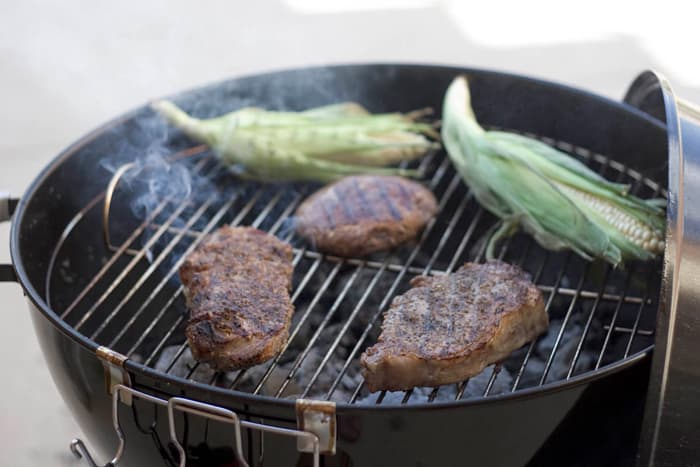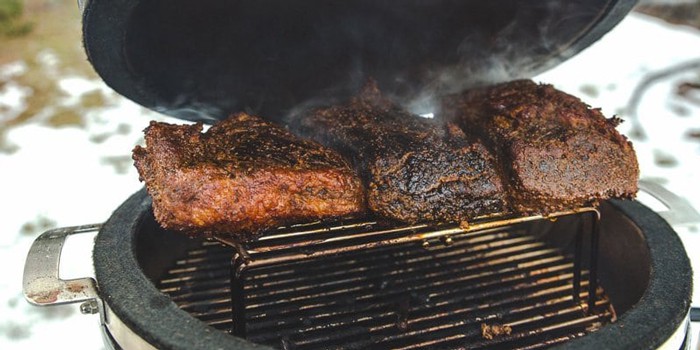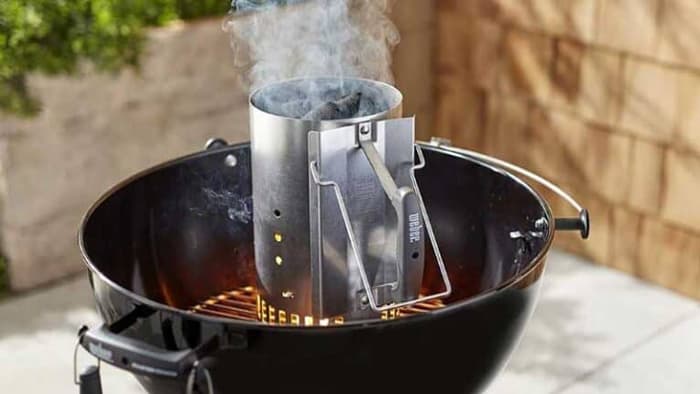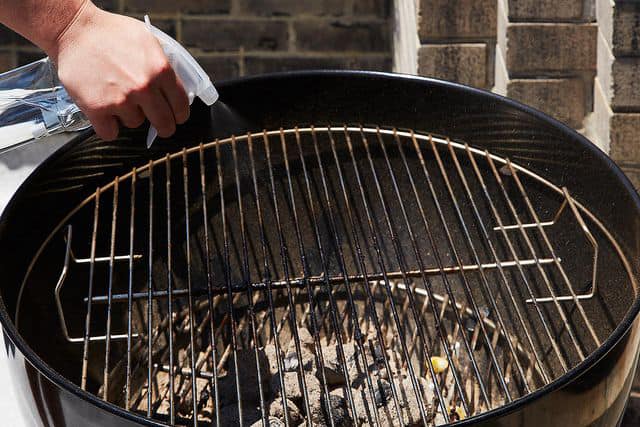When you start getting familiar with your charcoal grill, you’ll quickly notice it comes with vents, usually situated on the bottom and on the hood of the grill.
These vents control how air flows into the charcoal grill, which is necessary for keeping the charcoal burning and controlling temperature depending on the type of food you’re cooking.
If you don’t work these vents well, the temperatures may get too high that your food gets overcooked and burned. Or the coal burns out fast before you’ve finished cooking.
So, do you leave the vent open on your charcoal grill?
Let’s find out…
How do you use a charcoal grill vent?
You should open the vents fully during the lighting and preheating stage of your grill to allow in the much-needed air during this phase. If the temperatures get too high and you don’t want to cook your food quickly, try closing your grill vents a bit. Close the vents completely to kill the heat and cool down your grill.

As we have just mentioned earlier, a typical grill comes with a bottom and upper set of vents. Understanding how these vents work is the key to knowing how to use them to control fire in your charcoal grill and ensure you get perfectly cooked food.
Bottom vents
The bottom/lower vents are usually located at the bottom in most grills or along the lower half of the smokers. They’re specially designed to allow in the air (oxygen) needed to fuel your oxygen. They also go by the name intake dampers since they act as intake ports sucking in fresh air to replace the oxygen that gets used up during combustion.
When fully open, the more amount of air they let in. Consequently, more air makes your charcoal burn more…and the higher the temperatures rise. When you partially close the vents, they let in less air, and the temperatures in your grill become cooler. Close these vents completely and no air gets in, forcing the fire to go out.
Top vents
These vents typically appear on the lid and are also referred to as upper vents or exhaust dampers. They act as the chimney of your charcoal grill—taking hot air and smoke out of your grill, an action that pulls in fresh air via the bottom grill vents.
Because the exhaust dampers play a critical role in how much air enters your grill, they’re quite important than most people think and should NEVER be closed. You close them and you’ll be completely sealing your grill, killing the fire!
As most charcoal grill experts will tell you, it’s best not to leave the upper vents as they are and work the grill temperature control using the bottom vents.
Do I leave the grill vent open or closed?
Now that you know the different types of vents in a charcoal grill and their function, you might be asking yourself when exactly you ought to open or close them.

Whether to open or close the vents will depend on what stage you’re at in your grilling process as we’re going to explain below…
Fully open the lower vents when starting your grill
When you’re just starting your grill fire, you’ll need to expose your charcoal, and generally the interior of your grill, to as much oxygen as possible. Remember your goal here is to make fire and oxygen is a crucial ingredient for this to happen. More oxygen means an even easier fire-making process. At this point, you should keep all the top and bottom vents in your grill wide open.
Adjust the vents during cooking
Once you start your grill and keep the vents open, the temperatures keep rising and they might become too much for the food you’re cooking. After you have started grilling your meat, you’ll need to regulate the temperatures a bit to allow for proper cooking and to keep the charcoal from burning out fast.
The idea here is NOT to cut off oxygen supply completely, so you should only close the bottom vents halfway or three-quarters of the way. This is the sweet spot for letting in less oxygen to lower the grilling temperatures a bit.
Closing the intake dampers partially will help you achieve the magical number (225 degrees F, which is attributed to proper meat cooking).

Still, at it, we suggest setting the upper vents the same way you do to the bottom vents. This will ensure you don’t let more air escape than you’re letting in.
While you might also consider closing the lid when cooking larger items such as larger sweet potatoes and bone-in chicken, the idea to keep the lid as much open as possible should still come into play.
If the grill interior gets too smoky, you better open up the lid or the upper dampers as well.
Close the vents when you’re done cooking your food
When your foods get fully cooked, you’re done with the grill…but almost. You still need to put off the fire to let your charcoal grill cool down. This is where you completely shut all the top and bottom vents. This will completely cut down the oxygen supply and starve your charcoals of oxygen and stop them from burning.

Conclusion
The vents in your charcoal grill play an important role in regulating the amount of oxygen available to your charcoal and controlling the heat levels in your grill. You need to know how to manage these vents, when to open or close them, to ensure your food gets fully cooked at the correct temperatures. When you’re finished using your grill, remember to close all the vents to extinguish the fire and allow your grill to cool off for safe storage.

